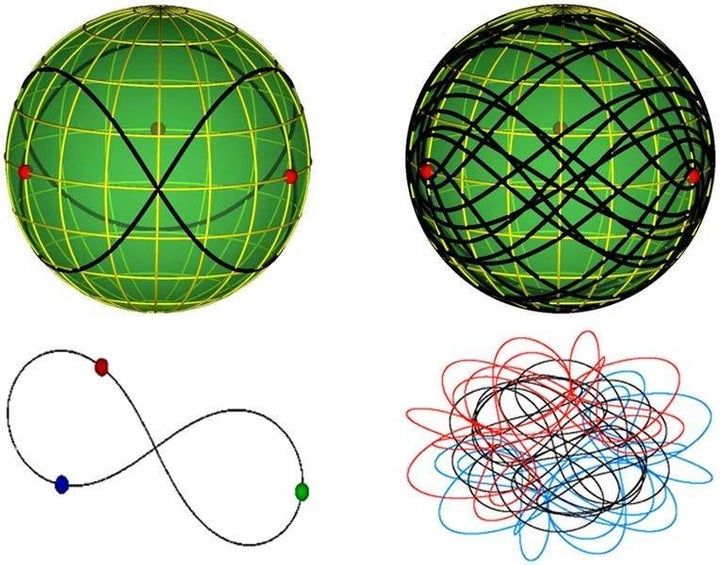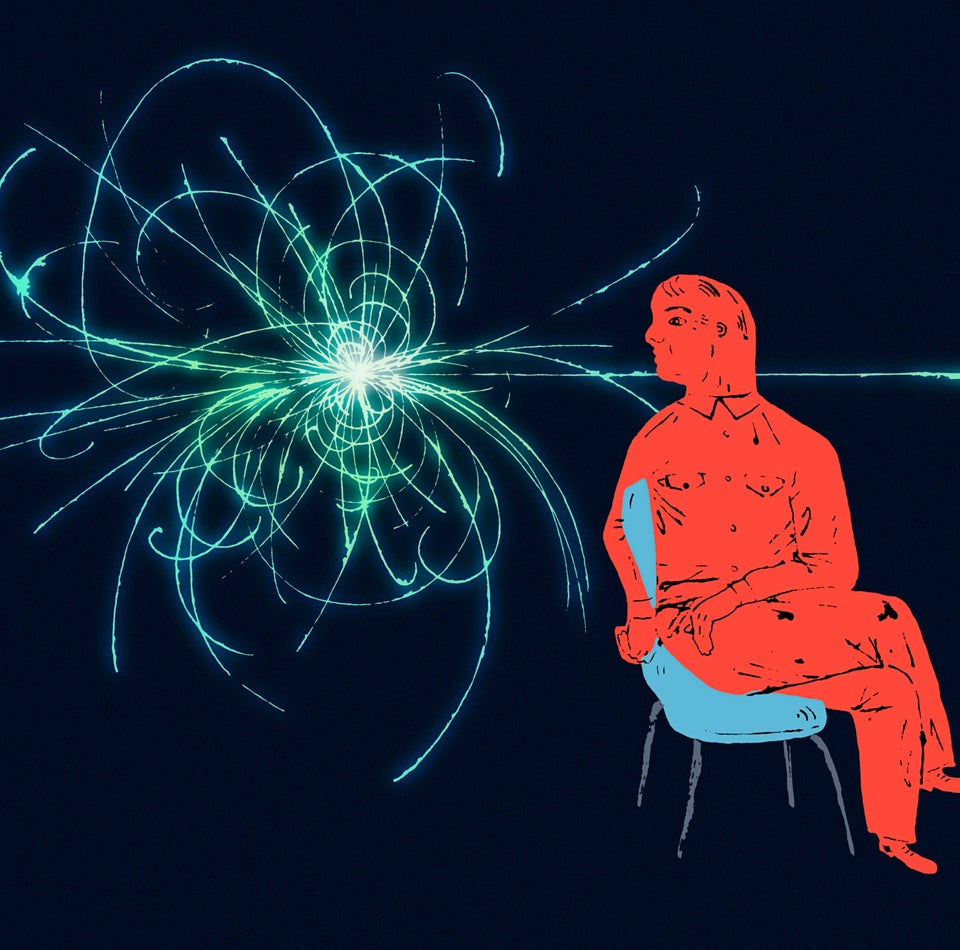
By Jon Cartwright
It's the sort of abstract puzzle that keeps a scientist awake at night: Can you predict how three objects will orbit each other in a repeating pattern? In the 300 years since this "three-body problem" was first recognized, just three families of solutions have been found. Now, two physicists have discovered 13 new families. It's quite a feat in mathematical physics, and it could conceivably help astrophysicists understand new planetary systems.
The trove of new solutions has researchers jazzed. "I love these things," says Robert Vanderbei, a mathematician at Princeton University who was not involved in the work. He says he, in fact, spent all night thinking about the work.
The three-body problem dates back to the 1680s. Isaac Newton had already shown that his new law of gravity could always predict the orbit of two bodies held together by gravity—such as a star and a planet—with complete accuracy. The orbit is basically always an ellipse. However, Newton couldn't come up with a similar solution for the case of three bodies orbiting one another. For 2 centuries, scientists tried different tacks until the German mathematician Heinrich Bruns pointed out that the search for a general solution for the three-body problem was futile, and that only specific solutions—one-offs that work under particular conditions—were possible. Generally, the motion of three bodies is now known to be nonrepeating.
Specific repeating solutions have been hard to come by, however. The famed mathematicians Joseph-Louis Lagrange and Leonhard Euler had come up with some in the 18th century, but it wasn't until the 1970s, with a little help from modern computing, that U.S. mathematician Roger Broucke and French astronomer Michel Hénon discovered more. Until now, specific solutions could be sorted into just three families: the Lagrange-Euler family, the Broucke-Hénon family, and the figure-eight family, the last of which was discovered in 1993 by physicist Cristopher Moore at the Santa Fe Institute.
The figure-eight family is so called because it describes three objects chasing one another in a figure eight shape. The Lagrange-Euler solutions are simpler, with the equally spaced bodies going around in a circle like horses on a merry-go-round. The Broucke-Hénon solutions are the most complex: Two objects dash back and forth on the inside, while the third object orbits around the outside.
The discovery of 13 new families, made by physicists Milovan Šuvakov and Veljko Dmitrašinović at the Institute of Physics Belgrade, brings the new total to 16. "The results are beautiful, and beautifully presented," says Richard Montgomery, a mathematician at the University of California, Santa Cruz, who was not involved with the discovery.
Finding any solution is a daunting prospect. Three objects in space can be set off in infinite ways. Somehow, initial conditions—starting points, velocities, and so on—must be found that bring the objects back to those conditions so the whole dance can start over again. Šuvakov and Dmitrašinović's method was to start with an existing solution on a computer simulation and then tweak its initial conditions until a new type of orbit materialized, as they report in a paper in press at Physical Review Letters. "What we did was the most simple-minded thing that you could do," Dmitrašinović says. "We were shocked when we discovered all these things, and we were even more shocked when we discovered that they had not been discovered before us."
Faced with so many new solutions, the Belgrade physicists invented a new classification system. They used an abstract space called a "shape-sphere," which describes the shape of the orbits in terms of the relative distances between the objects. Three spots around the sphere's equator mark where two of the particles would collide, and a line drawn over the ball, which must avoid those spots, maps how near the objects get to each other. The simplest solution on the shape-sphere is of the Lagrange-Euler family. It is just a single point, because it corresponds to all three objects maintaining the same distance apart by orbiting (in real space) in a circle.
Others solutions are much more intricate, however. The researchers' new "yarn" solution looks like a ball of yarn on the shape-sphere, although its real space orbit looks even more complex—rather like a huge mass of spaghetti. (All the solutions can be viewed online.) Šuvakov and Dmitrašinović separated all the orbits—including the previously known ones—into 16 families based on their shapes on the shape sphere. They then sorted these families into four classes based on symmetry and other properties of the shapes, the first which included all the previous solutions.
The next step for the Belgrade physicists is to see how many of their new solutions are stable and will stay on track if perturbed a little. If some of the solutions are stable, then they might even be glimpsed in real life. Now, the only widely accepted three-body solution observed in space is a system made up of the sun, Jupiter, and one of the nearby Trojan asteroids, which make up a Lagrange-Euler type circle. But if we look at enough "exoplanet" systems beyond our own, we might see some of the new, more complex solutions, too, such as a solar system that looks like a heap of spaghetti.
"Observational astronomy is moving very quickly forward," Dmitrašinović says. But he adds that spotting one of the solutions will still be very difficult. "It will take a while. I'm pretty sure it won't happen tomorrow."
ScienceNOW, the daily online news service of the journal Science
